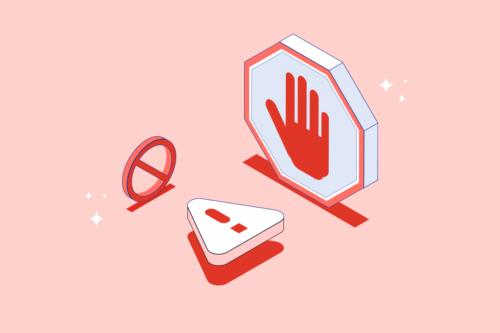
Investing in cryptocurrency can be a great way to diversify your portfolio. Although the crypto market is highly volatile at times, it has also shown incredible growth since its inception, in terms of increase in market cap, but also real-world adoption of the technology. This guide will detail how to choose reputable cryptocurrency exchanges to ensure that you are buying your first crypto from a trustworthy source. It will also outline several useful investing strategies and walk you through how to identify good cryptocurrencies to invest in.
Picking a reputable exchange
If you want to start trading cryptocurrencies, you’ll need to use a crypto exchange or broker platform. Exchanges provide the platform and the tools to trade your fiat currency for the crypto of your choice. There are hundreds of exchanges out there, so how do you know which one to use? Ideally, a reputable exchange should:
- Have a user-friendly, intuitive interface and user experience
- Provide excellent security options to secure your crypto assets
- Support many different cryptocurrencies
- Offer excellent customer support
- Offer low trading fees
- Offer different options for withdrawals (to an external cryptocurrency wallet) and online transactions
There are a few exchanges that meet all these criteria. For example, Swyftx is a popular trading platform for Australian and New Zealand customers. Some users go with an exchange because of how easy it is to use; others choose exchanges because of the cryptocurrencies on offer. Just make sure that you are aware of all the services an exchange offers (or doesn’t offer), before depositing your hard-earned money there.
What are the best cryptocurrencies to invest in?
Some believe that Bitcoin is the only cryptocurrency you need to own as it is the oldest and largest cryptocurrency, however, most crypto investors agree that it is a good idea to build a diverse portfolio that incorporates a broad spectrum of different digital currencies.
Bitcoin and Ethereum are the most important digital assets to hold because they are the most established and widely adopted. Many investors hold 80-90% Bitcoin and Ethereum, leaving 10-20% of their capital for low cap altcoins. Investing in other cryptocurrencies always contains more risk, but they also have the potential to outperform Bitcoin and Ethereum, as adoption increases, and their market share grows. This type of portfolio split is a bit like a boat. Bitcoin and Ethereum are the cabin and the deck (everything above water), and low cap altcoins are the hull of the ship.
Important to Remember
Above all else, it is important to do your own research before you start investing in cryptocurrencies. There are plenty of scams in the crypto market and influencers who are paid to shill (shamelessly advertise) coins to newbies.
How to identify good cryptocurrencies
There are over 20,000 cryptocurrencies on the market. Many are excellent projects with a lot of potential for massive growth and real-world adoption. But sadly, not every cryptocurrency will be successful. There are also a lot of scams and get-rich-quick schemes in the crypto market. Therefore, it is important to know how to identify good cryptocurrencies. The key is learning to perform high-quality and thorough research, which can include looking at use cases, adoption, market cap, and road maps.
Use cases
Most cryptocurrencies have a specific use case or aim to solve a problem using blockchain technology which is the underlying technology that allows cryptocurrencies to operate. The most important thing here is identifying cryptocurrencies that have big potential for real-world adoption, based on their use cases. Put simply, you are looking for projects that offer something useful that Bitcoin and Ethereum cannot. For example, a payment coin (or digital currency) that is faster and cheaper than Bitcoin or a coin that provides secure decentralized finance (DeFi) that challenges traditional financial institutions could be good investments.
Adoption
Adoption is how many people are using the product or service. Adoption is a powerful metric, especially in conjunction with use cases. For instance, if you have a payment coin that is faster and cheaper than Bitcoin, but only one company in Mozambique accepts it, chances are that it might not take off. Some good examples of large-scale adoption are Tesla accepting Bitcoin for buying cars and Visa using the Ethereum blockchain to settle payments. Official websites are usually a reliable source of gauging the level of project adoption. It could also be a good idea to check news websites such as CoinDesk or ask around on Twitter or Reddit to verify that the adoption is legitimate and not empty marketing.
Market capitalization
Market cap is the total market value of a cryptocurrency, determined by multiplying the price of the coin by the number of coins in circulation. If you’ve found a coin with a great use case and a high level of adoption, looking at the market cap can be a good next step. Market cap can help you determine whether a project is undervalued or overvalued. For example, an exciting new project has been launched with a market cap of fifty million USD. It offers an excellent service that has good adoption, on par with a more established project, which has a market cap of ten billion USD. This suggests that the project has a lot of room to grow. Coin Market Cap, Coin Gecko, and The Top Coins are great resources for checking market cap figures and coin prices.
Road map
Most cryptocurrencies will have a road map on their official website that outlines their current development objectives and details the goals for the next year or more. This can be a valuable source of information, so read it thoroughly. Does the road map seem to hit important milestones? Are the goals achievable? Is there anything in the roadmap that may entice investors or increase adoption? The best resource is the official website, but websites like CoinMarketCal are also great for keeping track of events and milestones, however, it generally favours larger projects. Luckily, there are usually conversation threads on Twitter and Reddit discussing these topics. Join in and see what you can learn!
Important to Remember
Although websites like Twitter and Reddit are great resources for information and learning, not everything you find on there will be true or verified. As such, it is a fantastic starting point for your research, but it should not be what you base your investments off.
Cryptocurrency investing and trading strategies
So, you’ve done your research and you have found a couple of crypto assets that you’d like to invest in. What now? Well, it’s important to find a crypto trading strategy and stick to it. Most successful beginners tend to use trading strategies such as dollar-cost averaging, holding, and buying the dip. These strategies aren’t exclusive to the cryptocurrency market. They are proven investing methods that have been successfully implemented in more traditional financial markets like the stock market, bond market, derivatives market and more.
Dollar-cost averaging
Dollar-cost averaging (DCA) is a simple strategy that involves investing smaller amounts of money on a regular basis, regardless of market conditions (Figure 1). It has been used in the stock market for decades. DCA can be a great way to avoid making emotional trades, based on swings in the market. It is also a particularly powerful strategy in volatile markets like crypto.

The downside of DCA is that often your return on investment would be much higher if you had bought early with a lump sum. However, this is quite hard to predict, particularly for beginners.
Holding
Holding (known in the crypto community as HODLing) can be a very effective long-term trading strategy. It is favoured because it requires a lot less work than many other methods. It involves buying a crypto asset and holding onto it for an extended period whilst avoiding urges to sell a digital asset if it rises or drops dramatically. The idea is that although the market can fluctuate wildly, good projects will generally follow an uptrend over higher time frames.
The downside is that you could have made good profits off your cryptocurrency investment, but you held expecting the price to go even higher. Additionally, sometimes you can be stuck holding a bag (keeping your coins without selling) for a lot longer than you ever planned to.
Tip
If the coin you want to hold also offers staking, that is an excellent way to increase the size of your position through staking rewards while holding and waiting for an increase in the asset price.
Buying the dip
Buying the dip is a strategy that should only be used on crypto assets with very solid fundamentals. It is a form of trend trading that is primarily concerned with identifying and buying dips or short-term price corrections in an uptrend. The amount the asset has to drop by to be considered a “buyable dip” varies from trader to trader. There are many different ways to calculate these dips, but as a rule of thumb, some traders will buy the dip if the asset has fallen by 10-20%.
The disadvantage of this method is that you might keep buying a falling asset thinking it’s a dip every time.
Key Takeaway
It is easy to find or develop a trading strategy that works for you; the hard part is sticking to it through thick and thin. Once you’ve found your strategy you should stand by it, no matter how much fear, uncertainty, and doubt (FUD) or fear of missing out (FOMO) is present in the market.
Using demo mode to practice trading
If you’ve picked some assets you’d like to invest in and you have decided upon a strategy, but you’re not yet ready to invest any money yet, you should try trading using demo mode! For example, with Swyftx you can use demo mode to test out and develop your trading strategies with zero risk of losing any money.
Where to store your cryptocurrency
After you have made your cryptocurrency investment, it will need to be stored in a cryptocurrency wallet. A crypto wallet is a software mechanism that stores your public and private keys that connects you to the blockchain in which your cryptocurrency exists. Most crypto exchanges have wallets already integrated into their platform so when you buy cryptocurrency, it is automatically stored within the exchange-provided wallet. It’s recommended, however, that you store your crypto assets in your own personal wallet.
There are two types of digital wallets – cold wallets and hot wallets. Hardware wallets, which are a type of cold storage wallet, store your crypto assets offline, which eliminates the risk of online hackers and scammers. This is one of the safest methods for long-term crypto storage. If you’re looking to trade cryptocurrency more regularly, then a mobile or desktop wallet may be more suitable for you.
Summary
The crypto market provides many exciting and profitable opportunities for new investors. This article has detailed how to find good cryptocurrencies to invest in and outlined several effective investment strategies. If you want to learn more about cryptocurrency, trading, or analysis, there is plenty of more great content on Swyftx Learn.
Next lesson
Disclaimer: The information on Swyftx Learn is for general educational purposes only and should not be taken as investment advice, personal recommendation, or an offer of, or solicitation to, buy or sell any assets. It has been prepared without regard to any particular investment objectives or financial situation and does not purport to cover any legal or regulatory requirements. Customers are encouraged to do their own independent research and seek professional advice. Swyftx makes no representation and assumes no liability as to the accuracy or completeness of the content. Any references to past performance are not, and should not be taken as a reliable indicator of future results. Make sure you understand the risks involved in trading before committing any capital. Never risk more than you are prepared to lose. Consider our Terms of Use and Risk Disclosure Statement for more details.

 Article read
Article read




